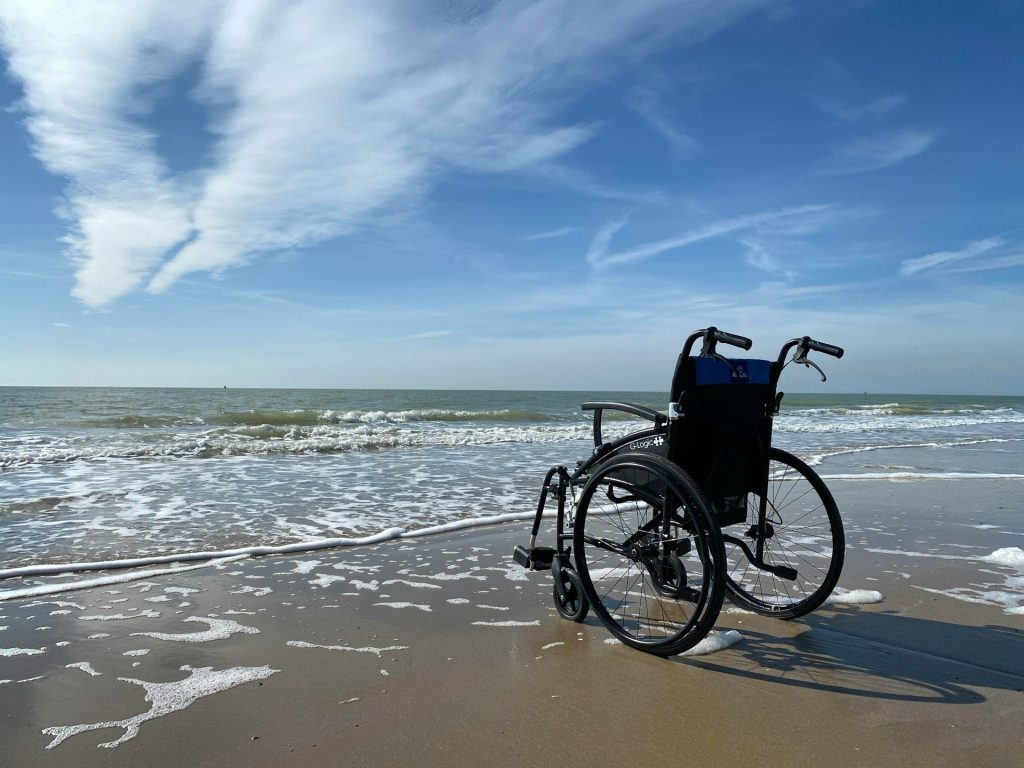A vacation for wheelchair users does not have to be a nightmare when it comes to getting to your destination by plane. All you need to do is gather the most important information and comply with the applicable regulations.
Above all, remember to report your need for assistance 48 hours before departure so that airport staff can effectively organise support. It is also worth consulting a doctor and taking a medical certificate confirming your ability to travel by plane. Here is some important information to read when travelling by plane with your own w.

What Is Air Travel Like for Wheelchair Users?
The first decision for wheelchair passengers traveling by air should be selecting an airline that provides good assistance. The airline needs to establish guidelines for mobility-limited travelers. The staff members of most airline companies provide special wheelchair accommodations with additional help for passengers who need assistance. Contacting the airline about your requirements should be your first step before booking tickets. Ask about the policies and procedures, which may vary between airlines and airports.
Check whether it is possible to use a wheelchair all the way to the gate or whether it must be checked in as bulky luggage. Also, find out about assistance options at the airport and during the flight. It should be done at least 48 hours before departure. Airports usually have facilities for wheelchair users, such as ramps, elevators, and wider passages. Special security checks may also be carried out. Having a foldable wheelchair for travel can make onboarding much easier, as it is more compact for storage and the device can often be taken on board as cabin luggage.
What About a Wheelchair During the Flight?
When travelling by air, you may need to temporarily give up your own wheelchair and switch to a transport wheelchair provided by the airline. It is important to mark your wheelchair to avoid confusion. It is a good idea to take any parts that could get lost, such as the seat cushion or joystick, with you into the cabin.
Some travelers prefer to bring their own wheelchairs on board. It’s a good idea to choose the right size and type of wheelchair that meets the airline’s requirements. For safety reasons, disabled people are not usually seated in aisles or emergency exits.
Depending on your ability, take the necessary cushions and other accessories that make sitting easier. If your seat is not comfortable, sitting for several hours without changing position can be really difficult.
Do you need to take medication or need help during the flight, for example, to change your position? Most airlines require you to travel with an assistant. Flight attendants rarely have the opportunity to help (that depends on the person, not the regulations). Some airlines offer a paid option to hire a medical assistant for the flight.
Are There Wheelchair Accessible Toilets?
It is recommended to visit the toilet before the flight, as difficulties may arise during the flight due to the limited space available. This applies especially when the very small on-board toilet requires the assistance of a companion. If you need to use the toilet during the flight, the cabin crew can help you get to it. On long-haul flights, additional on-board wheelchairs are available. If the passenger is unable to transfer from the wheelchair to the toilet on their own, they will need the assistance of a companion. The cabin crew is not authorized to provide assistance in this regard.
How Much Does It Cost to Transport a Wheelchair?
In most airlines, people with mobility impairments can usually take up to two mobility aids into the cabin, such as a wheelchair and a pair of crutches, in case there’s enough space provided on board. Alternatively, they can be checked in as bulky baggage. This does not incur any additional costs. The same usually applies to assistance at the airport or on board.
In different countries, different regulations may apply to the relevant services. To ensure a flawless start to your holiday, it is advisable to obtain information from the airline in advance about any costs and regulations regarding transport.

Conclusion
Let’s be real – air travel can be chaotic even without a wheelchair. But toss in mobility challenges, airline policies, and cramped airplane bathrooms, and it’s enough to make anyone hesitate before booking a trip. The good news? A little insider knowledge goes a long way. So, should you fly? Absolutely. Just go in prepared – because the best trips start with knowing what to expect, not crossing your fingers and hoping for the best. Now, where to next?
DON'T MISS ANYTHING!
FOMO - do you have it? Well there is no need to Fear On Missing Out here at Explore With Erin. Sign up to receive updates directly to your in box. I won’t spam you, but I do promise a whole lot of awesomeness. What are you waiting for? Join Me!
PS: We hate spam too, read our Privacy Policy here.


